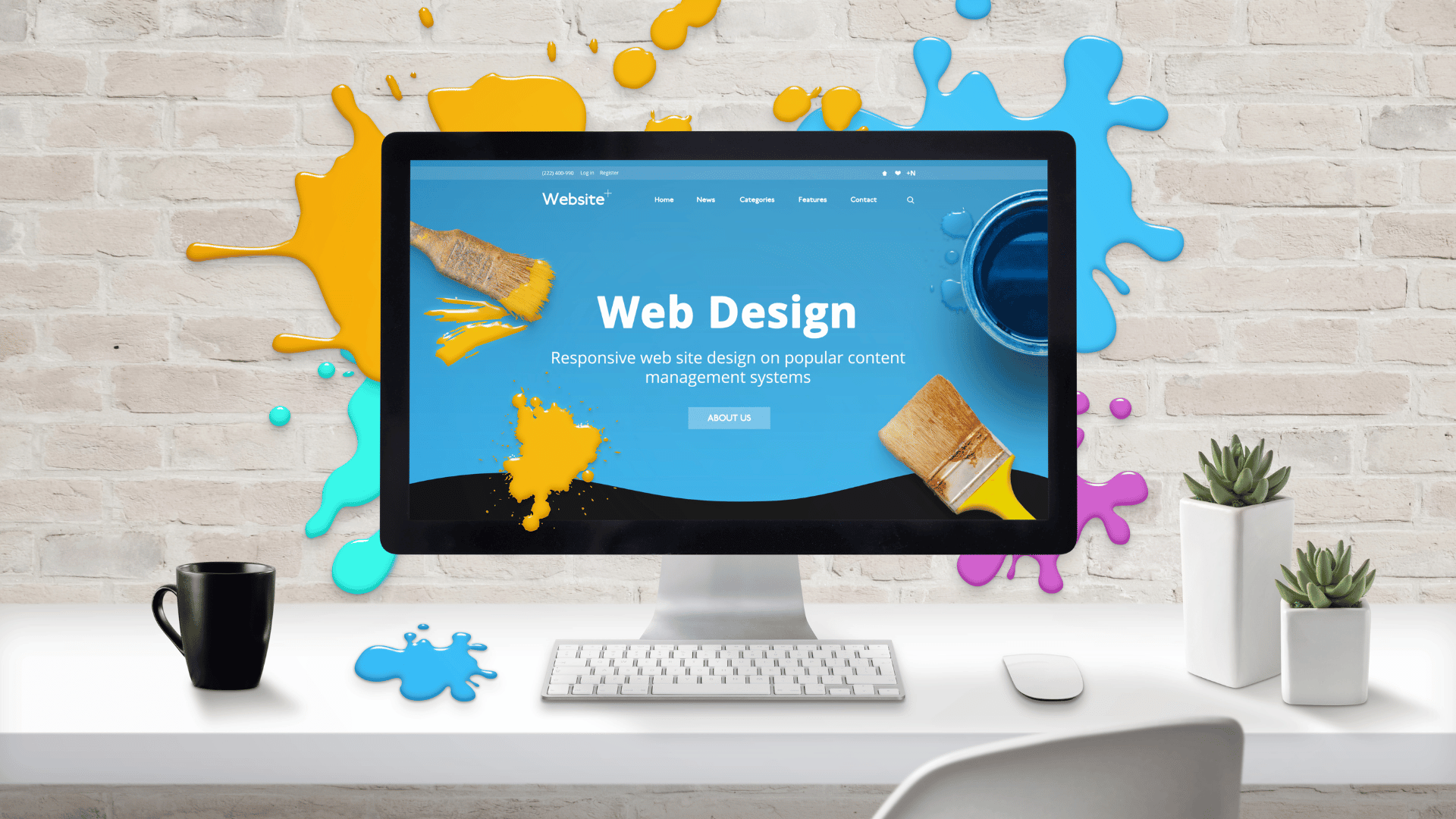Website Design London Ontario with Tailored Layouts and Functions
Wiki Article
How to Properly Incorporate Looks and Functionality in Web Style
When creating a site, you need to strike a balance in between aesthetic appeals and functionality. It's not practically looking excellent; your style ought to also offer an objective and overview customers efficiently. By focusing on simpleness and instinctive navigating, you can develop an appealing experience. What elements truly enhance usability while keeping visual charm? Let's discover the essential principles that can lead to a harmonious blend of beauty and feature.Recognizing the Relevance of Appearances and Performance
Comprehending the balance between looks and functionality is crucial for developing a reliable individual experience when you create a website. A visually appealing site grabs focus, but it's the performance that keeps users involved. If your site looks fantastic yet is hard to browse, site visitors will promptly lose passion and leave.Consider your target audience and what attracts them in. You intend to develop a layout that reflects your brand while ensuring convenience of use. Structured layouts, intuitive navigating, and clear phone call to action can boost both aesthetics and functionality.
Principles of Effective Website Design
To produce a reliable website design, you require to abide by numerous crucial concepts that improve both customer experience and visual appeal. Prioritize simplicity; a tidy format assists individuals browse easily. Utilize a consistent color design and typography to preserve comprehensibility throughout your website. This promotes experience and trust.Next, ensure your layout is receptive. Users access web sites on various devices, so your layout ought to adjust perfectly. Take note of visual pecking order; emphasize crucial components with size, placement, or shade to assist individuals' focus.Finally, integrate ample white space. It prevents mess and makes material extra digestible. Keep in mind, reliable website design balances aesthetics and capability, so every layout option ought to serve a purpose. By adhering to these concepts, you'll produce a website that's not only visually appealing but also user-friendly, inevitably maintaining site visitors involved and urging them to return.Prioritizing Customer Experience
When prioritizing individual experience, you'll intend to start by comprehending what your customers truly need. Simplifying navigation design can make a massive distinction in how easily they discover what they're trying to find. Improving aesthetic pecking order assists guide their interest to the most vital elements on your site.Understanding User Needs
Comprehending user needs is vital for developing an engaging web experience that keeps visitors coming back. To achieve this, you need to identify the objectives and choices of your target market. Begin by performing user research, like interviews or surveys, to collect insights on what individuals worth most. When communicating with comparable sites, pay attention to their pain factors and difficulties. This info permits you to customize your layout, making certain performance lines up with customer expectations. In addition, think about producing customer personas that stand for different segments of your audience, aiding you imagine their requirements during the design procedure. When you focus on recognizing customer needs, you produce a web site that not just looks fantastic yet additionally supplies a seamless, satisfying experience that promotes commitment.
Streamlining Navigating Style

Enhancing Aesthetic Hierarchy
A solid visual power structure is vital in leading users through your site and ensuring they engage with key web content. To achieve this, make use of shade, spacing, and size purposefully. Make vital aspects like headings bigger and bolder than body text, attracting focus immediately. Use contrasting shades to highlight phone calls to action, motivating clicks. Furthermore, employ enough white space to different areas, making content absorbable and inviting.Consider the circulation of information; set up elements rationally, leading customers' eyes from one factor to the following. Usage visual hints, like lines or arrows, to guide focus. By focusing on aesthetic pecking order, you enhance customer experience and enhance the possibility of conversions, ensuring your internet site is both visually pleasing and functionally reliable.Color Concept and Its Effect On Functionality
While selecting the best colors for your web site may look like a small information, it substantially influences functionality and customer experience. Shade impacts just how individuals perceive information and can boost or hinder navigation. Contrasting colors can help crucial aspects stand out, making it much easier for visitors to find what they need.Additionally, think about the psychology of colors: blue typically influences trust, while red creates seriousness. Knowing your target market can direct your shade selections, guaranteeing they reverberate well.Moreover, regular color design aid construct brand identification, making your website much more unforgettable. Nonetheless, beware-- way too many colors can bewilder individuals. Stick to a restricted palette that enhances your content and maintains clarity.Incorporating accessibility is also important; verify your color combinations get along for those with aesthetic impairments. By attentively using color concept, you'll enhance functionality and create an extra interesting customer experience.Typography: Harmonizing Design and Readability
Color choices established the stage for your site, but typography plays a similarly crucial function in improving user experience. You want your message to communicate plainly while likewise showing your brand name's character. Start by choosing fonts that are not only attractive yet additionally understandable. Sans-serif fonts usually work well for electronic screens, as they're less complicated to read at various sizes.Maintain a power structure by making use about his of different typeface dimensions and weights; this guides customers through your web content effortlessly. Take into consideration line spacing and letter spacing; too tight can annoy viewers, while as well loosened can interfere with the flow. Restriction your typeface options to 2 or three to keep the style cohesive.Finally, always evaluate your typography throughout different devices and browsers. What looks great on one screen may out another. Stabilizing style with readability warranties that your message resonates, keeping your target market informed and engaged.Responsive Design: Making Aesthetic Appeals Service All Tools
To guarantee your internet site looks great on any kind of device, you'll need to accept receptive design concepts. This technique assurances your site adapts to numerous display sizes, offering an excellent individual experience. Begin by utilizing fluid grids and flexible photos that scale flawlessly. Instead of fixed dimensions, go with percentages and relative devices, enabling your format to adjust dynamically.Next, execute media questions in your CSS. These allow you apply various designs based on tool qualities, like display size. By doing this, you can maintain visual charm while ensuring functionality.Don' t forget touch targets; make sure buttons and web links are very easy to touch on smaller sized displays. Prioritize essential material, so users can easily navigate your website no matter their device. By concentrating on these components, you'll produce an appealing, aesthetically appealing experience that fulfills the demands of all individuals, whether they're on a desktop computer, smart device, or tablet .Conducting Use Testing for Constant Improvement
To boost your website design, you need to establish clear usability goals that align with individual requirements. By carrying out individual tests, you can gather beneficial responses on just how actual individuals interact with your site. Examining these outcomes will certainly help you make educated improvements and create a much more effective individual experience.Specifying Usability Goals
While looks can draw individuals in, specifying use objectives is crucial for guaranteeing their experience stays seamless and gratifying. Beginning by recognizing what you desire customers to accomplish on your site (website design london Ontario). Consider their tasks, requirements, and behaviors. Are they trying to find information, making a purchase, or enrolling in a newsletter? Develop clear benchmarks to determine success, like job completion prices or time on task. Focus on user-friendly navigation, accessible content, and responsive design to improve usability. On a regular basis take another look at these goals as individual expectations develop. By defining usability objectives, you produce a framework for evaluating and boosting your website's efficiency. This concentrate on usability not only boosts user contentment however also enhances the overall performance of your layoutConducting Individual Tests
Performing individual tests is important for improving your internet site and ensuring it fulfills your audience's demands. Begin by recognizing your target users and producing a test strategy that details your purposes. Utilize a mix of measurable and qualitative methods, such as surveys, meetings, and task-based monitorings, to collect extensive responses. Welcome participants to browse your website while you observe their communications and keep in mind any kind of problems they encounter. Encourage open dialogue to catch their ideas and sensations about the layout and capability. Keep sessions brief and concentrated, guaranteeing you cover essential locations without frustrating individuals. Ultimately, ensure to document all searchings for, as this details will certainly be invaluable for making educated design decisions that enhance both aesthetics and use.Evaluating Test Outcomes
Exactly how can you successfully analyze the outcomes of your use tests to drive continuous enhancement? Start by categorizing feedback right into typical themes. Look for patterns in individual behavior that highlight pain factors or locations for improvement. Usage measurable data, like task completion prices and time on job, to gauge usability fairly. Do not fail to remember to think about qualitative understandings from customer remarks; they frequently disclose underlying concerns that numbers can't reveal. Focus on one of the most impactful findings and create actionable things for your layout team. Remember, it's concerning iterating-- apply modifications, then examination once more. This cycle of screening, assessing, and refining assists you balance appearances and performance, guaranteeing your site fulfills customer requirements effectively while preserving visual allure.Often Asked Concerns
How Do I Choose the Right Color Combination for My Website?
To select the right color palette for your website, consider your brand's individuality, target market, and psychological influence (website design london Ontario). Usage shade psychology, create harmony, and warranty readability. Examination combinations to see what resonates ideal with site visitorsWhat Equipment Can Aid With Web Layout Appearances and Capability?
You can use tools like Adobe XD, Figma, and Lay out to boost your website design's looks and functionality. These systems use instinctive user interfaces, cooperation features, and pre-made layouts to streamline your imaginative procedure and boost your styles.Exactly How Can I Incorporate Animations Without Jeopardizing Capability?
To incorporate computer animations without endangering capability, prioritize refined results that boost read this post here individual experience. Usage CSS animations for smoother communications, guarantee fast find out here now lots times, and test on different devices to preserve performance while including visual appeal.What Are Usual Blunders to Stay Clear Of in Website Design Aesthetics?
When creating, avoid cluttered designs, poor color options, and inconsistent typefaces. Don't forget mobile responsiveness, as it can estrange customers. Confirm your layout aligns with your brand name, creating a smooth experience that engages visitors successfully.How Typically Should I Update My Internet site's Design for Ideal Aesthetics?
You must upgrade your website's style every 1-2 years to stay on par with fads and preserve suitable looks. On a regular basis renewing visuals helps involve warranties and site visitors your website continues to be user-friendly and enticing. When you design a web site, understanding the balance between aesthetics and performance is crucial for creating a reliable user experience. To create an efficient internet style, you need to stick to numerous crucial principles that enhance both user experience and visual allure. Customers gain access to websites on numerous tools, so your style should adjust flawlessly. When focusing on user experience, you'll desire to start by understanding what your customers truly require. Begin by carrying out customer research, like surveys or meetings, to gather understandings on what users worth most.Report this wiki page